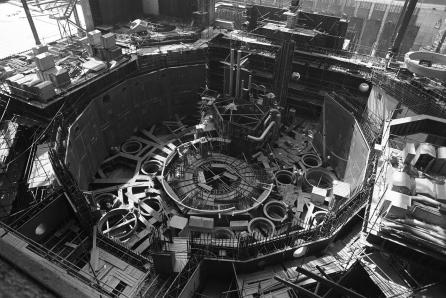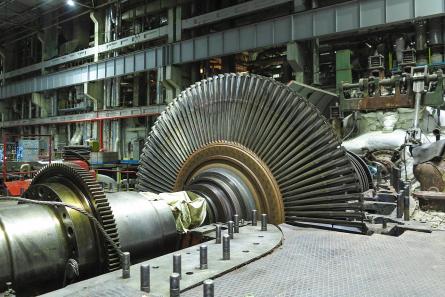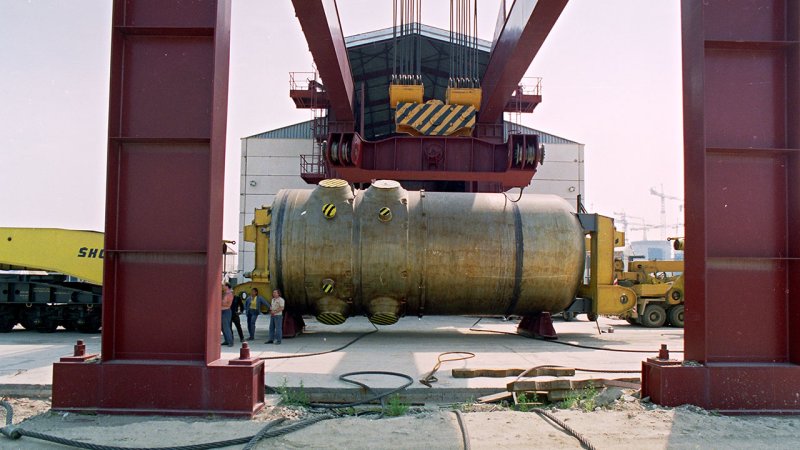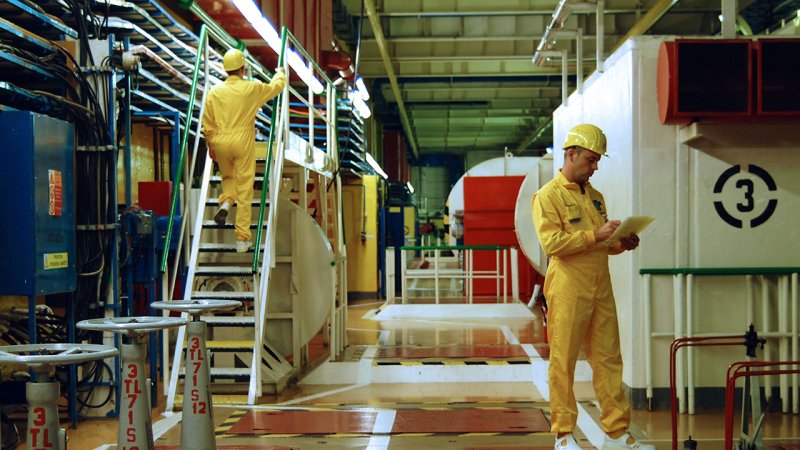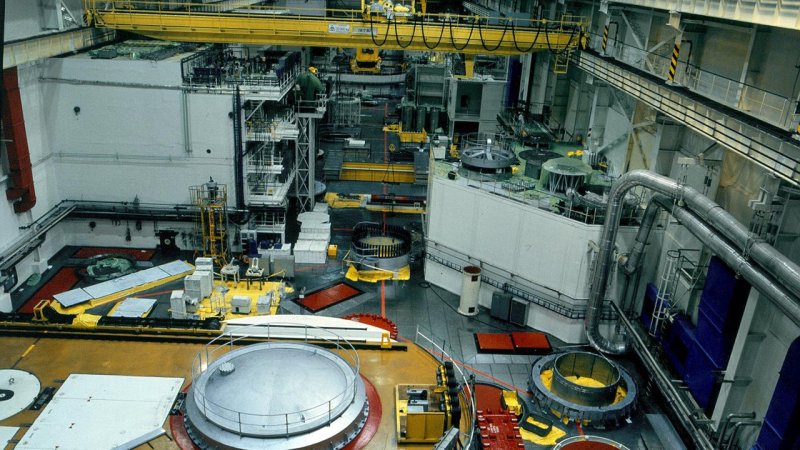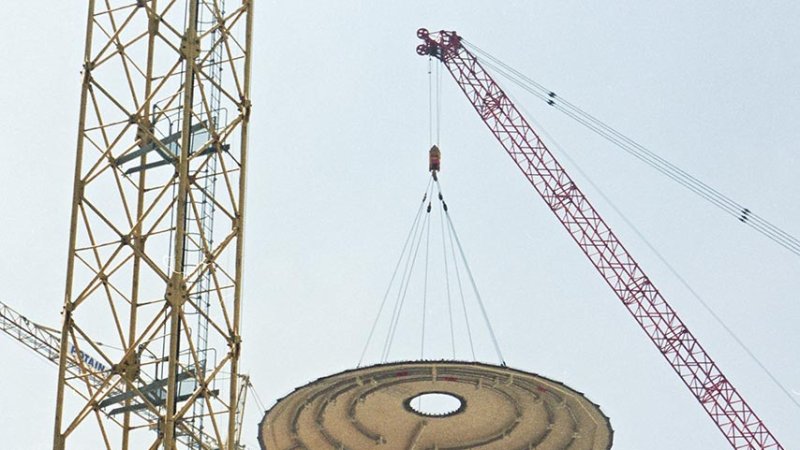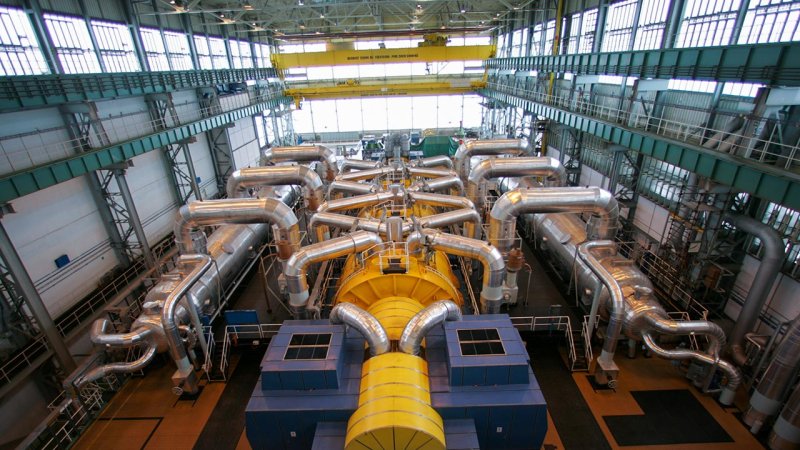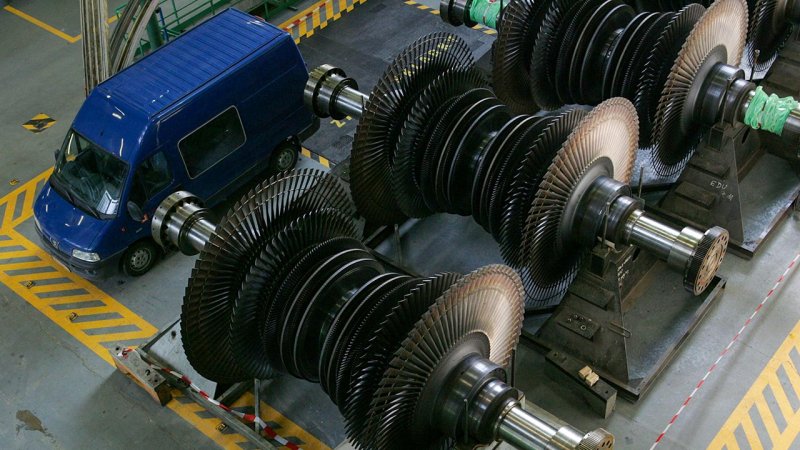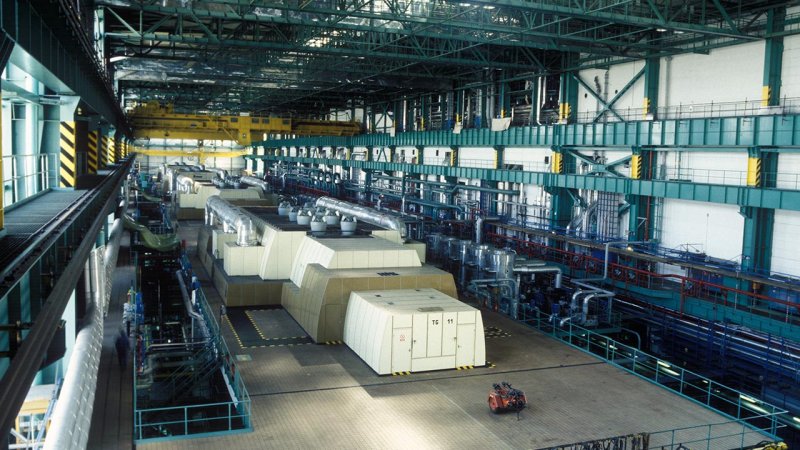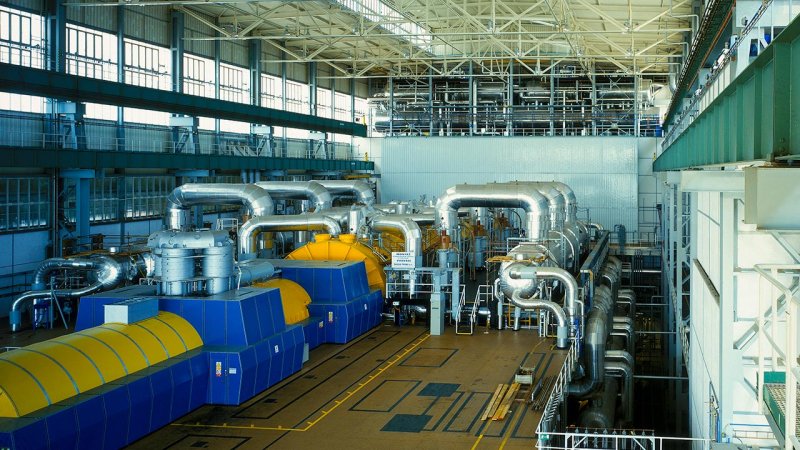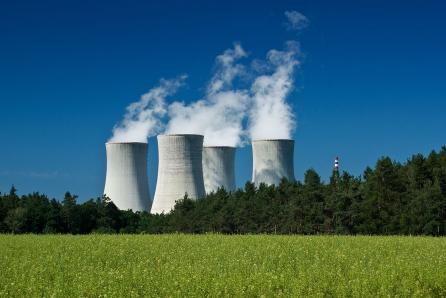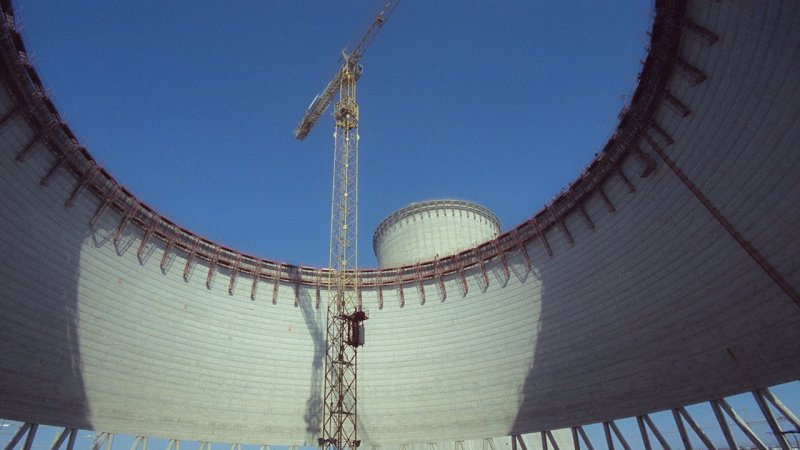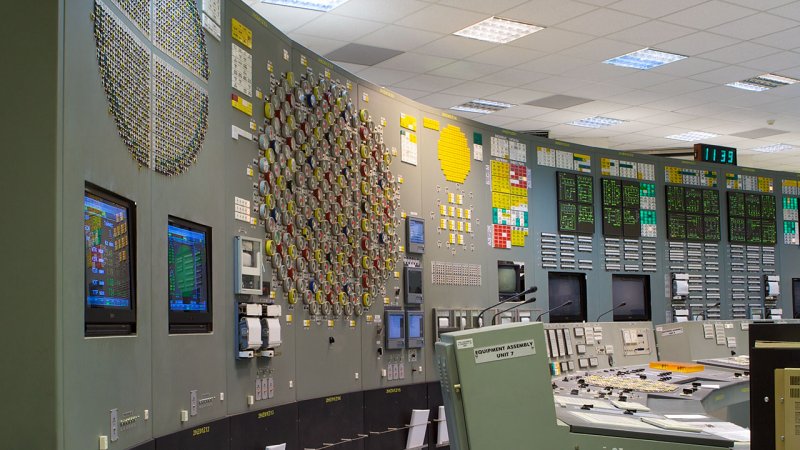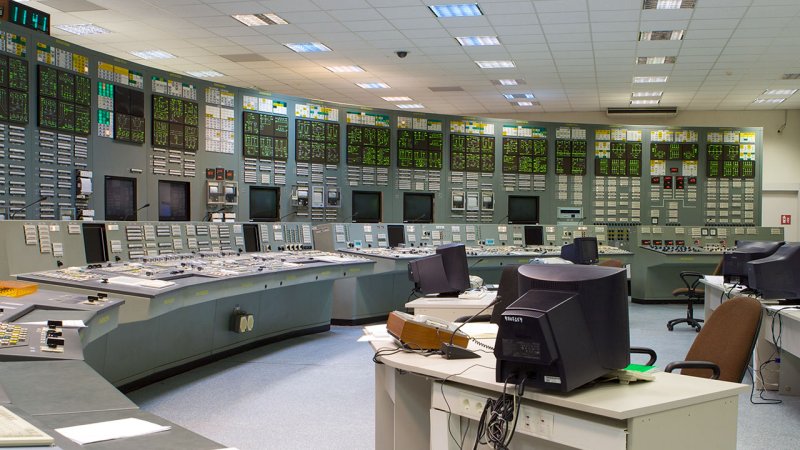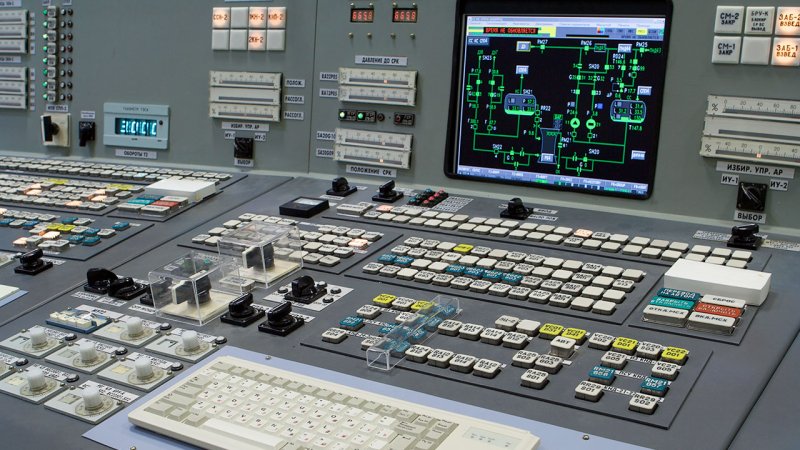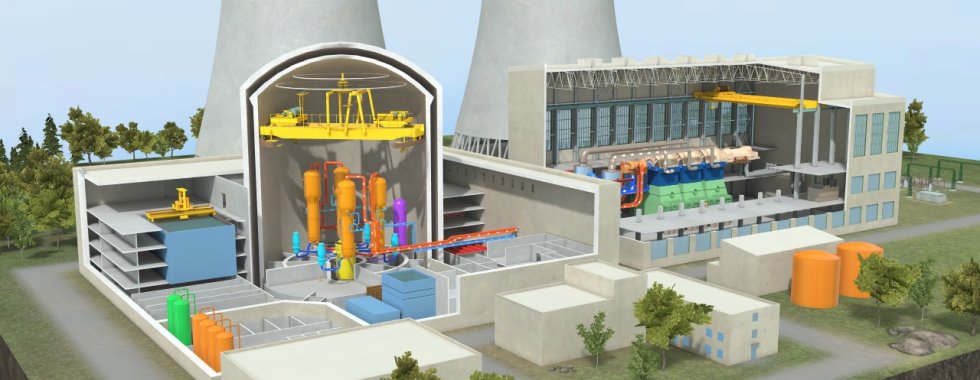
The Nuclear Power Plant — How it Works
8 min read
A nuclear power plant is basically a thermal power plant in which the heat source is an ongoing atomic fission reaction. A coolant removes the released heat and in a steam generator this heat is transferred to water in a secondary circuit where steam is generated. This steam powers a steam turbine that drives a generator to generate electricity.
Video: Nuclear power plant schematic diagram.
The Reactor Core
Heat is generated in a nuclear power plant by the fission of atomic nuclei contained in the nuclear fuel loaded in the so-called reactor core. Natural or enriched uranium or MOX, a mixture of uranium and plutonium oxides, is usually used to produce the nuclear fuel. The reactor core may also contain a moderator (used to slow down neutrons) and absorber rods used to control the course of the fission reaction.
Construction of the Temelin nuclear power plant; concreting of the hermetically sealed cavities for the steam generators and for the primary circuit’s auxiliary equipment.
The Reactor
Under favorable conditions, fully under the control of the power plant operators, a controlled fission reaction takes place inside a reactor core. During this reaction, energy is generated by the fission of atomic nuclei primarily in the form of heat. This heat is removed from the fuel rods by means of a coolant. Water is the most commonly used coolant. Less frequently, molten metal or gas can be also used. The coolant temperature is about 300 °C when it exits the reactor. The actual reactor is a steel or concrete vessel or just a set of channels housing the nuclear fuel. A reactor must be able to withstand high temperatures and pressures and a strong neutron flux. The estimated service life of a reactor is about 60 years.
Primary Circuit and Steam Generator
Video: 3D model of the VVER 1000 reactor’s primary circuit.
Coolant exiting a reactor circulates in a closed circuit known as the primary circuit. The coolant transfers its energy in a heat exchanger known as the steam generator. Water in the other circuit, known as the secondary circuit, heats up while in the generator, starts to boil, and steam is generated. This steam is then dried (water droplets are removed) and supplied to a turbine. In a double circuit power plant, the radioactive water remains in the primary circuit and does not come into direct contact with the turbine or any other non-nuclear component of the power plant.
Some types of power plants are based on just a single circuit. The boiling occurs directly in the reactor core and the generated steam is dried and supplied directly to a turbine. The advantage of a single-circuit power plant is its simpler design and higher thermal efficiency. However, the water is in direct contact with the nuclear fuel containing radioactive isotopes. Although most of these isotopes have a short half-life, the turbine is contaminated anyway.
Disassembled steam turbine under repair. The turbo generator, condenser, and the recuperation compose the secondary circuit; they are practically identical to the ones used in classical power plants.
Containment
The so-called nuclear side of a nuclear power plant is composed of the reactor, the primary circuit, and a steam generator. These components are usually enclosed in a concrete enclosure know as the containment. It provides protection from outside damage and at the same time, it prevents the release of radioactivity in case a serious accident occurs inside the reactor. Modern containments are able to withstand the impact of an airplane. They are constructed of pre-stressed concrete and a slight constant overpressure is maintained inside the containment.
Secondary Circuit, Turbine and Generator
Video: Model of a low-pressure turbine rotor of a nuclear power plant.
The secondary circuit and other related components are not part of the nuclear side of a nuclear power plant. Their functionality is identical to that of all thermal power plants. Steam generated in the secondary circuit is supplied to a turbine that may be up to 70 meters long and contain several stages. The first one is the high-pressure stage that is driven directly by the steam generated in the steam generator. After the steam passes through the high-pressure stage, it is pre-heated and supplied to a low-pressure stage (or possibly a medium-pressure stage) that has longer blades. The turbine spins at a speed of 3,000 rpm and drives a generator that generates the electricity.
The largest turbine in the world is the Arabelle that operates in the French nuclear power plant Chooz-B and has a power output of 1,500 MW.
Cooling
Cooling towers with natural air circulation are a dominant feature of all the nuclear and fossil power plants that do not use a direct cooling by river or by seawater.
In order to maximize the energy conversion, the steam has to be condensed when exiting the steam turbine. To do that, a third circuit, called the tertiary circuit, is used. The water may be cooled either directly by sea water or river water or by means of cooling towers. Lower towers employ the forced ventilation of air injected through sprayed water. The water is cooled by its evaporation. The second type of a cooling tower, usually a dominant feature of any thermal power plant, is a concrete shell in the shape of a hyperboloid about 100 meters tall. The water is pumped to about one-fifth of its height, where it is evenly divided along the area and sprayed. It falls down by gravity to a pool below the tower. Due to the tower’s shape, a natural draft drives air from the tower base upwards and thus cools the sprayed water.
A nuclear power plant requires 3,000 liters of cooling water to produce1 MWh.
Power Plant Power Output
The power plant’s tertiary circuit provides steam condensation at the turbine output. Condensation heat is removed through the cooling towers into the atmosphere.
There are three different ways to express the power output of a nuclear power plant:
- Thermal power expressed in MWt that is a measure of how much heat is generated by the reactor.
- Gross electric power output MWe, which is a measure of how much electricity is generated by the generator.
- Net electrical power output MWe, which is a measure of how much electricity is supplied to the grid. Part of the generated electricity is consumed by the power plant itself for production purposes. Since the power output differs between winter and summer, due to seasonal variation in the cooling efficiency, an average power output or the lowest summer output is used.



